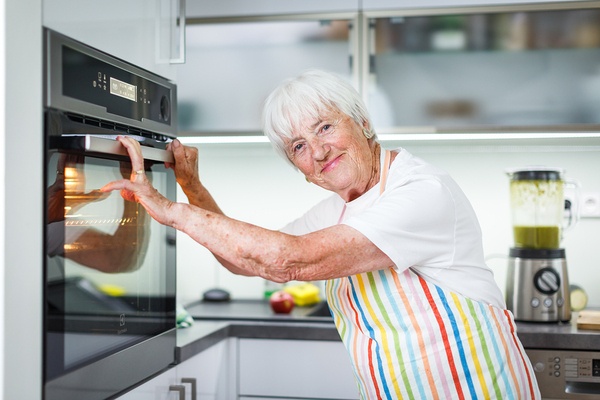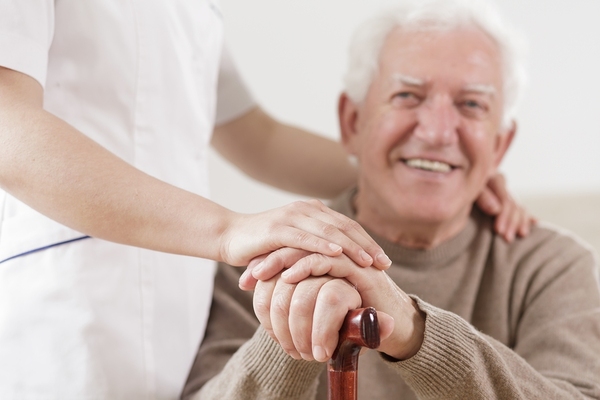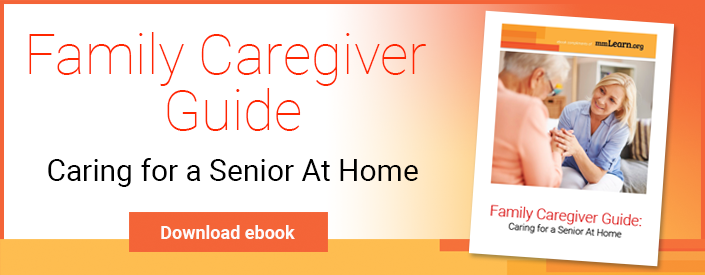 The desire to age in place is common among older adults today. Essential to helping them achieve this goal? The ability to attend to the activities of daily living, AKA the “ADLs.” Here’s a closer look at why the ADLs matter, along with how adaptive equipment can play in supporting mobility and independence in seniors.
The desire to age in place is common among older adults today. Essential to helping them achieve this goal? The ability to attend to the activities of daily living, AKA the “ADLs.” Here’s a closer look at why the ADLs matter, along with how adaptive equipment can play in supporting mobility and independence in seniors.
About the ADLs and IADLs
ADLs are activities which are fundamental to self-care. According to the University of Nebraska Medical Center (UNMC), “Elders who maintain their ADL's have a higher level of independence. Declines in these functions are predictive of poor outcomes in hospitalization, illness and higher mortality. The easiest way to remember these is that they are the functions you had to do in order to leave home to go to 'kindergarten'. You had to be able to; dress, feed, ambulate, toilet, and perform your own hygiene.”
Continues UNMC, “The amount of assistance depends on the type of help needed; an older adult who only needs help with bathing may require assistance every few days, whereas someone who has difficulty transferring might require full-time help. The loss of independence in the performance of an ADL may be a sign of a chronic illness such as dementia, depression or heart failure. The loss of continence is a predictor for placement in long-term care facilities.”
In addition to the basic ADLs covered above, there is also a secondary level comprising the instrumental activities of daily living (IADLs). These include more advanced functions which are still necessary for self-care, including preparing meals, shopping, performing housekeeping, using the telephone, transporting themselves, medication management, and managing their own finances.
Says UNMC, “If a patient is not able to perform one or more IADL's, assistance will be needed for activities such as shopping, meal preparation, housework, medicine organization and paying bills. If caregiver supports are not adequate and the patient becomes a risk, a change in living situation (assisted living or nursing home) may be needed.”
While these activities may seem simple to the young, strong and healthy, they can become increasingly difficult for frail older adults. In both cases, identifying changes in an individual’s ability to attend to the ADLs and IADLs can help determine areas for intervention.
Mobility Maintenance Tips
One of the best ways for seniors to maintain mobility in order to support their ADLs and IADLs? Functional fitness training. The Mayo Clinic says, “Functional fitness exercises train your muscles to work together and prepare them for daily tasks by simulating common movements you might do at home, at work or in sports. While using various muscles in the upper and lower body at the same time, functional fitness exercises also emphasize core stability.”
And while functional fitness training has benefits for people of all ages, “it may be especially beneficial as part of a comprehensive program for older adults to improve balance, agility and muscle strength, and reduce the risk of falls,” according to the Mayo Clinic.
Additionally, a number of tools exist aimed at helping older adults manage mobility challenges which might otherwise compromise their ability to continue to live independently, including dressing sticks; reachers/grabbers; long handle shoe horns; button hooks, sock aids; and long handle sponges. Learn more about using adaptive tools.
While there is a learning curve involved with integrating adaptive equipment into daily life, the payoffs are profound in terms of boosting both independence and confidence in older adults.

Physical, cognitive and emotional changes are a natural part of the aging process. While these changes may not be preventable, they are often manageable -- with the right strategies in place, that is. Caregivers can play a vital role in supporting the ongoing independence of aging loved ones by understanding the ADLs as well as the resources available to help them.
If you're looking for a comprehensive resource for family caregivers, check out our online Family Caregiver Guide.mmLearn.org offers a large library of free videos for caregivers of older adults, covering topics pertaining to senior care, including on adaptive equipment and strengthening exercises and living independently. Whether you are a healthcare professional or a family caregiver, if you are caring for an older adult we know that you will find mmLearn.org an essential learning and guidance tool for all of your caregiver training needs. Access our free database of online caregiver videos to start learning today.

